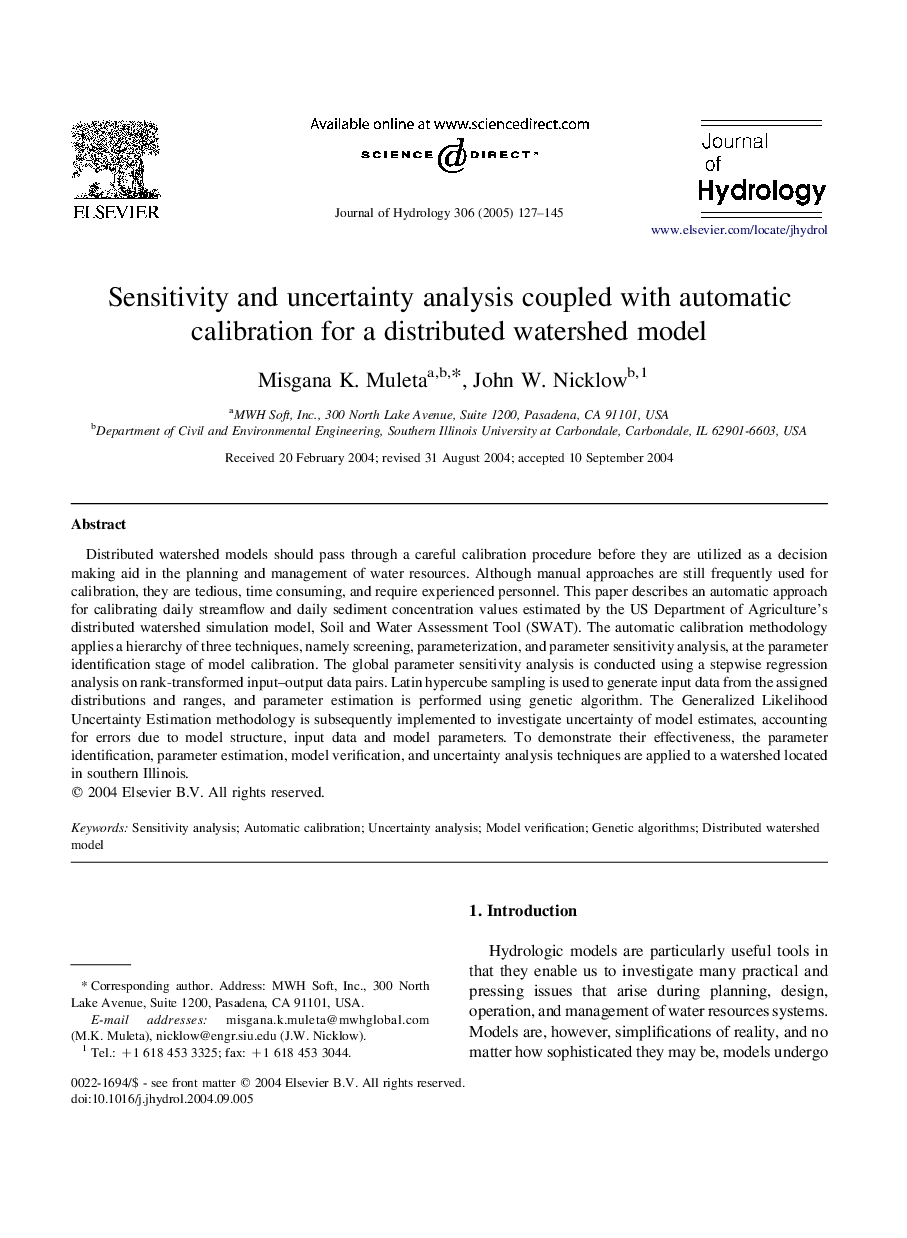| Article ID | Journal | Published Year | Pages | File Type |
|---|---|---|---|---|
| 9491413 | Journal of Hydrology | 2005 | 19 Pages |
Abstract
Distributed watershed models should pass through a careful calibration procedure before they are utilized as a decision making aid in the planning and management of water resources. Although manual approaches are still frequently used for calibration, they are tedious, time consuming, and require experienced personnel. This paper describes an automatic approach for calibrating daily streamflow and daily sediment concentration values estimated by the US Department of Agriculture's distributed watershed simulation model, Soil and Water Assessment Tool (SWAT). The automatic calibration methodology applies a hierarchy of three techniques, namely screening, parameterization, and parameter sensitivity analysis, at the parameter identification stage of model calibration. The global parameter sensitivity analysis is conducted using a stepwise regression analysis on rank-transformed input-output data pairs. Latin hypercube sampling is used to generate input data from the assigned distributions and ranges, and parameter estimation is performed using genetic algorithm. The Generalized Likelihood Uncertainty Estimation methodology is subsequently implemented to investigate uncertainty of model estimates, accounting for errors due to model structure, input data and model parameters. To demonstrate their effectiveness, the parameter identification, parameter estimation, model verification, and uncertainty analysis techniques are applied to a watershed located in southern Illinois.
Keywords
Related Topics
Physical Sciences and Engineering
Earth and Planetary Sciences
Earth-Surface Processes
Authors
Misgana K. Muleta, John W. Nicklow,
